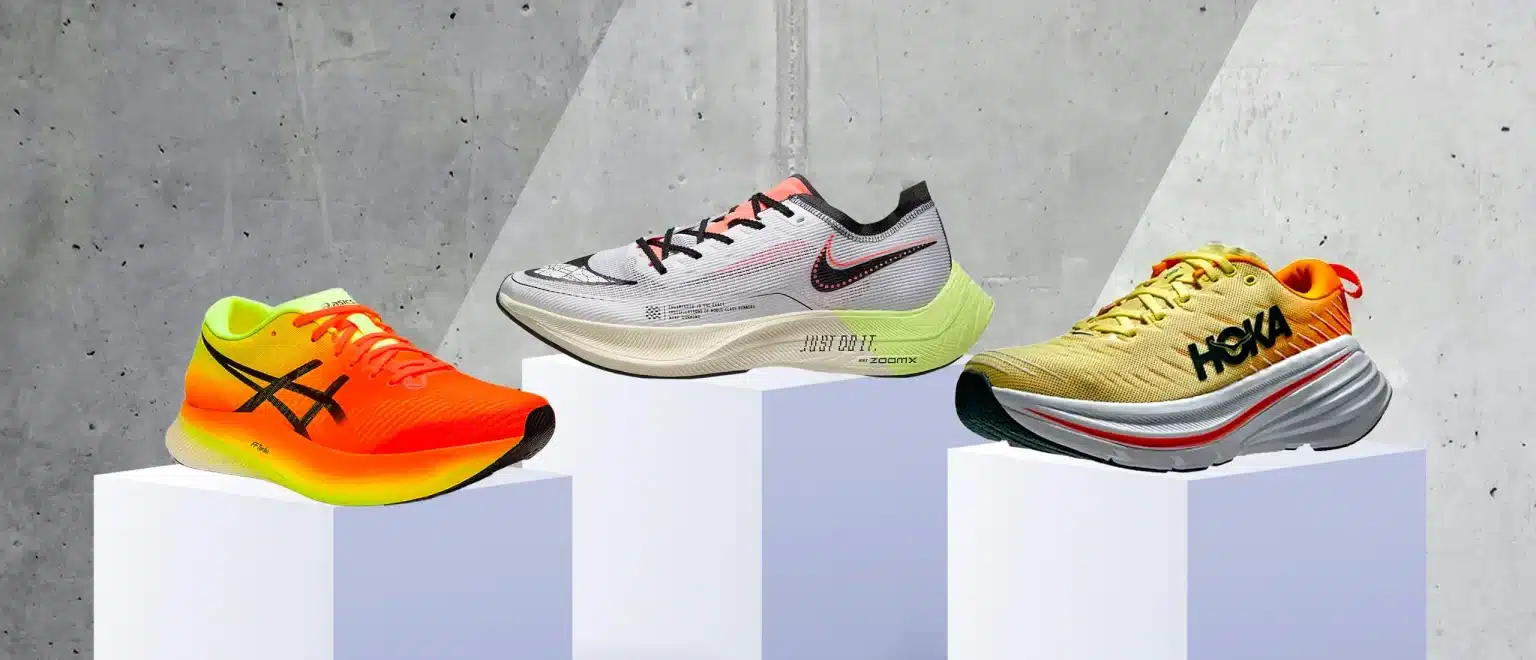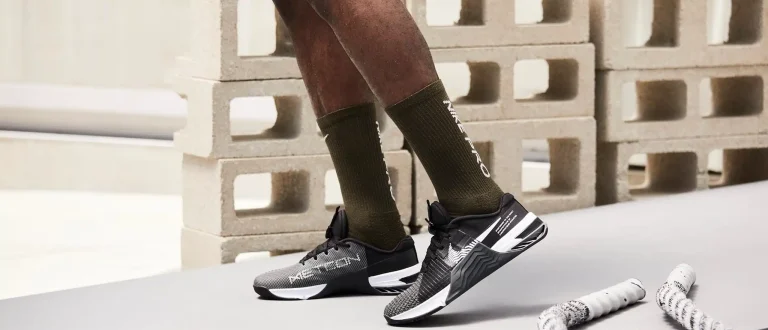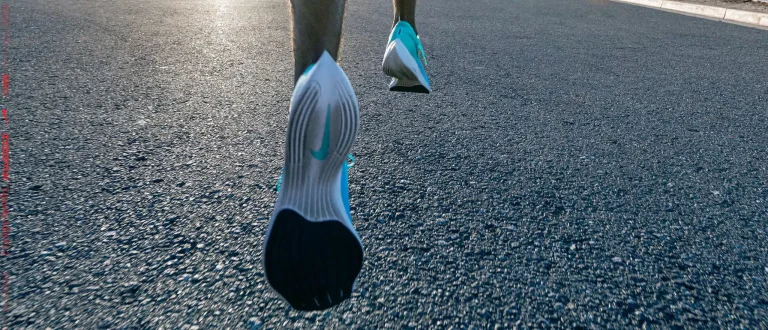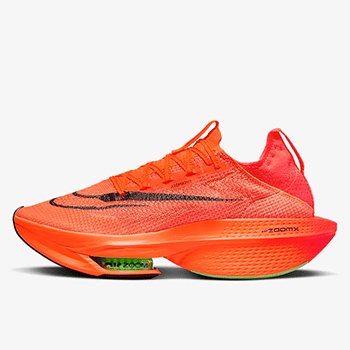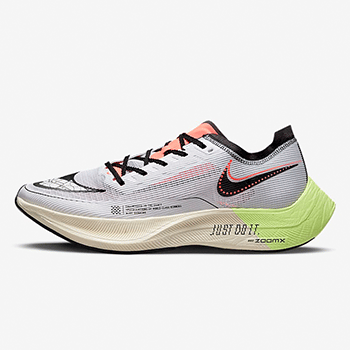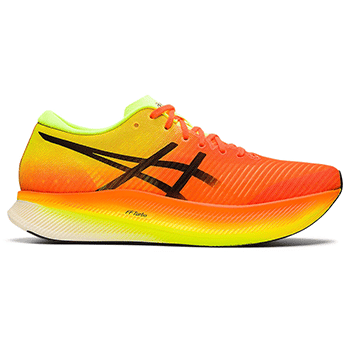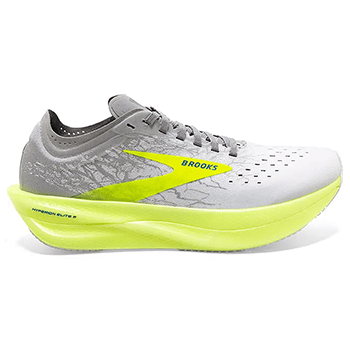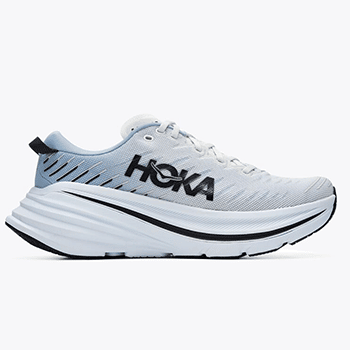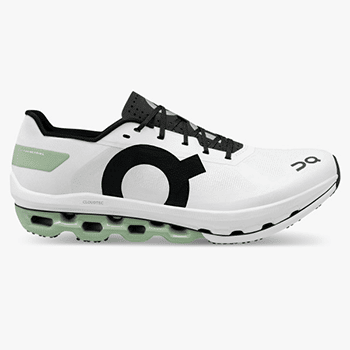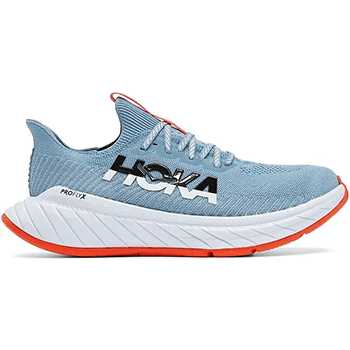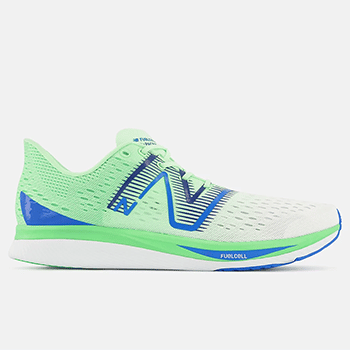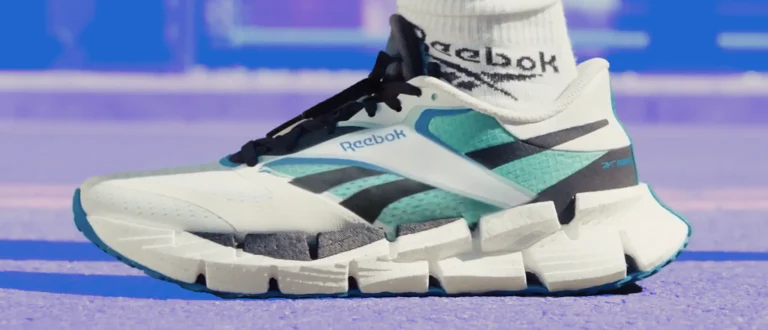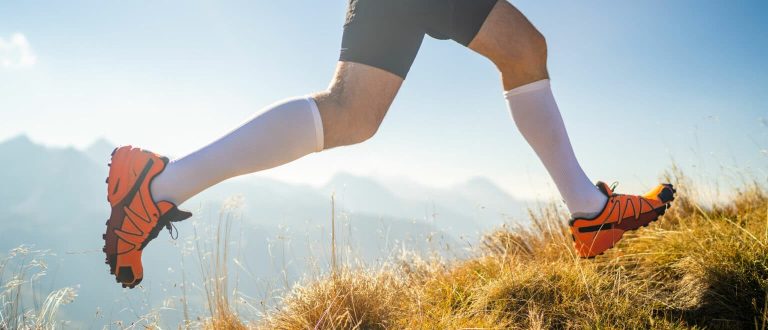Our product recommendations are selected by editors, tested first-hand, or expert-approved. We may earn a commission through links on our site.
One minute into your run, you feel like you’re made of lead. 10 minutes, and your legs feel creaky. You want them to move faster, but it’s like you’re moving through quicksand. You power on, and by minute 30, you’re finally feeling good—euphoric even. You’re warmed up, your joints are in a flow, and you feel like you could stay in motion forever.
Now, imagine if you could skip that whole first part, and get straight to the runner’s high, flying across the pavement with ease. That’s exactly what carbon plate running shoes were made to do—propel you forward with each step to shave minutes off your mile without expending extra effort.
How Do Carbon Plate Running Shoes Work?
“These shoes are actually more complex than they’re often given credit for,” says Zack Crockett MD, an incoming rehabilitation medicine candidate at Harvard Medicine/Spaulding Rehab in Boston, MA. “Carbon fiber plates have gained traction for their notoriously efficient way of leveraging potential energy and converting it to kinetic energy.”
“The carbon plate acts as a durable, lightweight base that places the foot in a firm downward sloping angle. This angle and the curved shape of the plate not only allows the foot to rock forward (think teeter-totter) during the running motion but also places the ankle and foot in a biomechanical advantage to better push off the ground with each strike,” he says.
With your foot and ankle in prime position to strike the ground, it then becomes about maximizing the force. “With each step, energy is lost, whether it be through friction, unnecessary movement, heat, etc.,” Crockett adds. “The carbon sole passes this potentially wasted energy into the foam base of the shoe. As the foam compresses, it acts as a spring thus propelling the runner forward with each step.”
Are Carbon Plate Running Shoes Good for Your Joints?
“Carbon fiber soles provide a stiff base for the foot, which limits unnecessary joint movement in the foot and ankle” says Crockett. “Security at these joints means that less energy is wasted and more can be used to propel you forward. Whether or not this leads to appreciable changes in lower rates of injuries still remains to be determined.”
Do Carbon Plate Running Shoes Have Benefits Beyond Running?
Nike named its early carbon fiber shoe the “4%” model, claiming that it would improve running economy by up to four percent. “While having a greater bang for your buck on each step may sound beneficial for any sport, the literal bang for your buck just doesn’t seem worth it unless you’re looking for a competitive edge,” says Crockett. “With the average carbon fiber shoe cost extending deep into the $200 range, there are plenty more financially sound shoe options to lift weights, walk around the park, or make a Chipotle run in.”
That said, if you’re looking for a lightweight, heavily cushioned shoe to wear while walking the dog, and you don’t mind dropping $200 on it, then a carbon fiber model can’t hurt.
Whether you want to shave minutes off your PR, or just want to try the spring-board technology out of sheer curiousity, we’ve rounded up eight of the best carbon fiber running shoes on the market, starting with Crockett’s favorite.
The Best Carbon Plate Running Shoes for Men
Nike Air Zoom Alphafly NEXT% 2
“Offering any suggestion that isn’t the Nike Zoom Alphafly Next% will be seen as blasphemous these days,” says Crockett. And for good reason. When Eliud Kipchoge finished a marathon in 1:59:40 in 2019, he was wearing a prototype of the Nike Air Zoom Alphafly NEXT%. And now the technology is available to marathoners and casual runners alike. Thanks to two ultra-responsive Zoom Air pods in the forefoot, additional foam in the heel for shock absorption and cushion, and a carbon fiber plate, these shoes harness and transfer energy shattering PRs in the process.
Nike ZoomX Vaporfly Next% 2
While the Alphaflys were created in collaboration with Kipchoge, think of the Vaporflys as their younger brother. These shoes still deliver a rush of kinetic energy back to the runner, but they do so in a sleeker, less bulky silhouette. If you’re someone who likes to feel the ground a bit beneath your feet, opt for the Vaporflys, which are a bit more stable. If you’ve never slipped on a pair of Nike’s carbon plate running shoes, be forewarned that they’re ultra-lightweight and deliver a bit of a rocking motion with each step.
Asics Metaspeed Sky
As Crockett mentioned, one of the perks of carbon fiber plates is their stability, which helps to limit joint mobility, reducing energy output. Asics’ carbon fiber running shoes take this concept to the next level with a design that helps reduce ankle flexion to conserve more energy so you can run faster with less effort. These shoes don’t skimp on cushion, though. The thick sole absorbs shock from each step, further protecting your joints while pounding the pavement.
Brooks Hyperion Elite 2
Brooks has been a marathoner’s preferred sneaker for years, and this carbon fiber running shoe is a testament to that. In addition to the propulsive carbon-fiber plate, these shoes also contain a nitrogen-infused cushion for even more energy return and durability (Brooks claims the shoe will stand up to 400 miles). If you’re someone who gets attached to their sneakers and doesn’t often like to waste time breaking in a new pair, the Hyperion Elite 2 could be your solution.
Hoka Bondi X
Hoka is beloved for its extreme dedication to cushion. But that doesn’t mean it can’t do fast, too. The Bondi X, an iteration of the highly cushioned Bondi, includes an energy-saving and propulsive carbon-fiber plate for an efficient ride and an extended heel rocker for greater acceleration. You’d think that a shoe with this much foam would feel clunky, but it’s the total opposite. These sneakers are light-as-a-feather and offer superior support, too.
On Running Cloudboom Echo
If you want the explosive power of a carbon plate, but none of the thick foam that usually supports one, try On Running’s Cloudboom Echo. It combines the brand’s carbon Speedboard with a rocker-like shape to deliver even more pep to every step. While you won’t find a thick sole on this shoe, rest assured that it’s still got comfort top of mind, with enhanced forefront cushioning, a breathable, mesh upper, and a geometric rubber sole that increases traction in both wet and dry conditions.
Hoka Carbon X 3
The second Hoka shoe to grace this list packs lots of speed in a smaller footprint than the Bondi X, above. This shoe has more of that rocker feel that helps your foot roll from heel to toe with every step. If stability is what you seek, Hoka’s Carbon X 3 delivers in spades with a wider platform compared to other brands in the carbon plate running shoe category. It also features a knit upper to keep things lightweight and breathable, plus its bootie-like pull-on construction adds to the comfort factor.
New Balance FuelCell SuperComp Pacer
Whether you like to get a quick five in before work, or you spend your Saturday afternoons banging out 20 milers, these New Balance sneakers are up for the challenge. In addition to the carbon fiber plate, these shoes also feature a double-layer spring midsole to maximize liftoff after impact. Combined with a single-layer mesh upper, they’re lightweight and offer more ground feel than your average high-density foam running shoe. Meaning, they’re a great all-around option for just about any workout from HIIT to flag football. They’re also the least expensive option on this list, making them a great entry to the technology.

